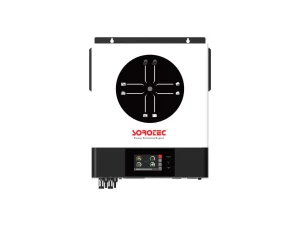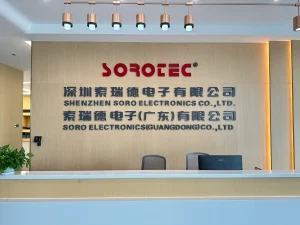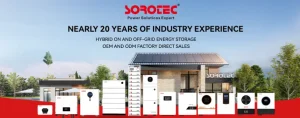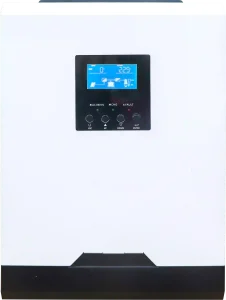Picking the right solar inverter for a commercial setup isn’t just about plugging in and hoping for the best. It comes down to matching the gear to your daily grind—think factories humming along, offices staying lit, or warehouses running non-stop. At SOROTEC, we’ve seen businesses thrive with setups that handle real-world demands, from dusty industrial sites to grid-ti ed urban spots. This guide walks through the steps, drawing on our REVO series to show how to nail that choice. Let’s dive in.

What Are Your Power Requirements?
Before eyeing any inverter, get a clear picture of what your business actually draws. Overestimate, and you’re wasting cash on oversized kit. Underestimate, and you’re back to blackouts mid-shift. Start simple: list every machine, light, and gadget that runs at once.
Calculate Total Load Wattage
Add up the watts for all essentials. Say your workshop has welders at 5kW each, fans pulling 500W, and lights at 1kW total. That’s your baseline—maybe 12kW on a busy day. Tools like online calculators help, but jot it down first. For SOROTEC clients in manufacturing, this step often reveals hidden draws from HVAC units, pushing needs to 15kW or more.
Account for Surge Demands
Motors and compressors kick in hard—up to twice their running watts for seconds. A 3kW pump might surge to 6kW. Factor in 20-30% extra to avoid trips. In retail chains we’ve equipped, ignoring surges meant fried starters. Check spec sheets; good inverters like our REVO VM IIPRO handle peaks up to 2x rated power without flinching.
Plan for Scalable Capacity
Aim for 20% headroom. A 10kW setup today might need 12kW tomorrow with new lines. SOROTEC’s parallel options let you stack units later—no full rip-out. One logistics firm we worked with started at 6kW and doubled up in year two, seamless as pie.
Nailing power needs points you to the inverter family that fits. Next up: types tailored to commercial life.
Which Inverter Type Fits Your Commercial Needs?
Commercial solar isn’t one-size-fits-all. Remote ops crave independence; city spots lean on the grid for backups. Match the type to your site’s story—off-grid isolation or hybrid hustle—and you’ll cut downtime while trimming bills.
Off-Grid for Remote Operations
Far-flung warehouses or mines? Off-grid inverters run solo on batteries and panels, no grid strings attached. They shine in spots where lines are spotty or pricey to run. Our REVO VM IIPRO series powers these setups with pure sine wave output, keeping sensitive gear like PLCs humming. A mining client in arid zones swore by it—zero outages over two years.
Hybrid for Grid Backup
These switch seamlessly between solar, battery, and grid. Ideal for factories facing brownouts. They feed excess power back, earning credits. SOROTEC’s REVO HES models blend this, with fast 10ms transfers. One food processor we outfitted slashed outage losses by 40%, blending solar days with grid nights.
All-in-One for Integrated Systems
Packaged with charge controllers and monitoring, these simplify installs. Great for rooftops feeding HVAC and lights directly. The REVO HESS from SOROTEC bundles it all, cutting wiring headaches. A hotel chain picked these for phased rollouts—plug-and-play across sites.
Type sorted, efficiency steals the show. Why settle for half-measures when trackers can squeeze every watt?
Why Prioritize MPPT and Efficiency?
MPPT isn’t jargon; it’s the edge that turns patchy sun into steady juice. Commercial roofs cast shadows from vents or AC units—poor tracking means lost output. High-efficiency picks recover that, paying for themselves quicker in high-use spots.
Multiple MPPT Trackers
One tracker per string? Fine for flat fields. But commercial arrays twist around obstacles. Multi-MPPT handles east-west splits or shaded rows separately. SOROTEC inverters pack 2-4, boosting yield by 15% in uneven setups. A distribution center saw it firsthand—more kWh from the same panels.
Up to 98% Conversion Efficiency
DC to AC losses eat profits. Top units hit 98%, wasting pennies not dollars. In sunny climes, that’s thousands saved yearly. Our REVO line delivers this, proven in dusty factories where heat saps lesser models. Simple math: higher percent, fatter bottom line.
Adaptive Power Tracking
Algorithms tweak for clouds or angle shifts. No static settings—real-time smarts. This keeps output steady, vital for 24/7 ops. SOROTEC’s built-in tweaks mean one client’s brew line never dipped below 95% uptime, even on overcast weeks.
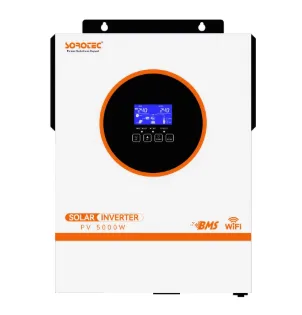
What Key Features Boost Reliability?
Downtime costs real money—lost shifts, spoiled stock. Smart features spot issues early, balance loads, and talk to batteries. In commercial installs, these aren’t extras; they’re must-haves for peace of mind.
WiFi Remote Monitoring
Check stats from your phone, anywhere. Alerts for low charge or faults hit before calls do. SOROTEC’s optional WiFi on REVO units lets managers dashboard via app. A chain of stores used it to preempt a panel fault, saving a full-day shutdown.
Dual Output Load Management
Split critical from non-essentials—fridges on one port, lights on another. Prioritize during dips. Our models handle 100% on mains, 60% on battery. Warehouses love this; keeps freezers frosty while fans idle.
Lithium Battery Communication
RS485 or CAN links sync charge cycles, dodging over-draws. Extends life 2x over lead-acid. SOROTEC supports LiFePO4 natively—safer, lighter. One EV charging station client stretched packs to 8 years with it.
How Does Battery and Solar Integration Work?
Seamless pairing means more runtime, less fuss. High inputs gobble sun greedily; ports keep batteries happy. Generators as backup? Dual feeds cover gaps.
High Solar Input Currents
Panels push 100A+ in peaks—match it or throttle output. SOROTEC’s 120A max on REVO HES drinks it all, for bigger arrays without waste. A solar farm add-on client maxed their 10kW roof this way.
RS485/CAN Battery Ports
Direct talk prevents mismatches. Set depths of discharge right, wake dormant packs. Our inverters plug in easy, with protocols for major brands. Factories report 20% longer cycles.
Generator Dual Input
Auto-start gens on low solar. Blends fuel with renewables cleanly. REVO HESS takes both AC sources, prioritizing green. Remote sites lean on this—stormy days didn’t faze one oilfield op.
Why Choose SOROTEC for Durability?
We’ve built for harsh spots—heat, dust, floods. IP65 seals out grit; warranties back the talk. Scaling? Stack ’em high.
IP65 Protection Rating
Dust-tight, water-jet proof. Thrives in coastal warehouses or desert plants. SOROTEC’s REVO series shrugs off monsoons; one Asian port install ran flawless through typhoons.
5-Year Comprehensive Warranty
Covers parts, labor—no fine print traps. Beats the 2-year norm. Clients in volatile grids value this; quick swaps kept a data center online.
Parallel up to 6 Units
Link for 48kW bursts, single or three-phase. No single failure tanks all. A mall retrofit scaled from 8kW to 24kW painlessly.
Which SOROTEC Model Is Right for You?
Our REVO lineup covers bases. All-in-one for simplicity, hybrids for versatility, off-grid for isolation. Match to your setup.
REVO VM IIPRO 1.6-10kW Off-Grid
Scales from small sheds to full plants. 27A PV input, no-battery start. Remote breweries run it solo, zero grid ties.
REVO HESS 6/8kW All-in-One
Integrated charger, inverter, monitor. Peak-valley charging saves on off-hours. Suits rooftop hybrids; one office block cut bills 35%.
REVO HES 6/8kW On-Off Grid
CT sensor blocks backfeed, powers big loads. WiFi and parallels for growth. Factories pick it for seamless switches.
Choosing right pays off fast. These picks, tuned to your needs, keep commerce charged.
FAQs
Q1: What’s the typical payback on a commercial solar inverter setup?
A: Around 4-7 years, depending on sun hours and incentives. Businesses see quicker returns with net metering—excess sells back cheap.
Q2: Can SOROTEC inverters work with existing diesel generators?
A: Yes, dual inputs sync them smooth. Switches in under 10ms, blending fuel and solar without hiccups.
Q3: How do I know if my roof can handle these inverters?
A: Check load ratings first—most commercial roofs take 4-6 lbs per sq ft. Our team assesses via site pics; no guesswork.


